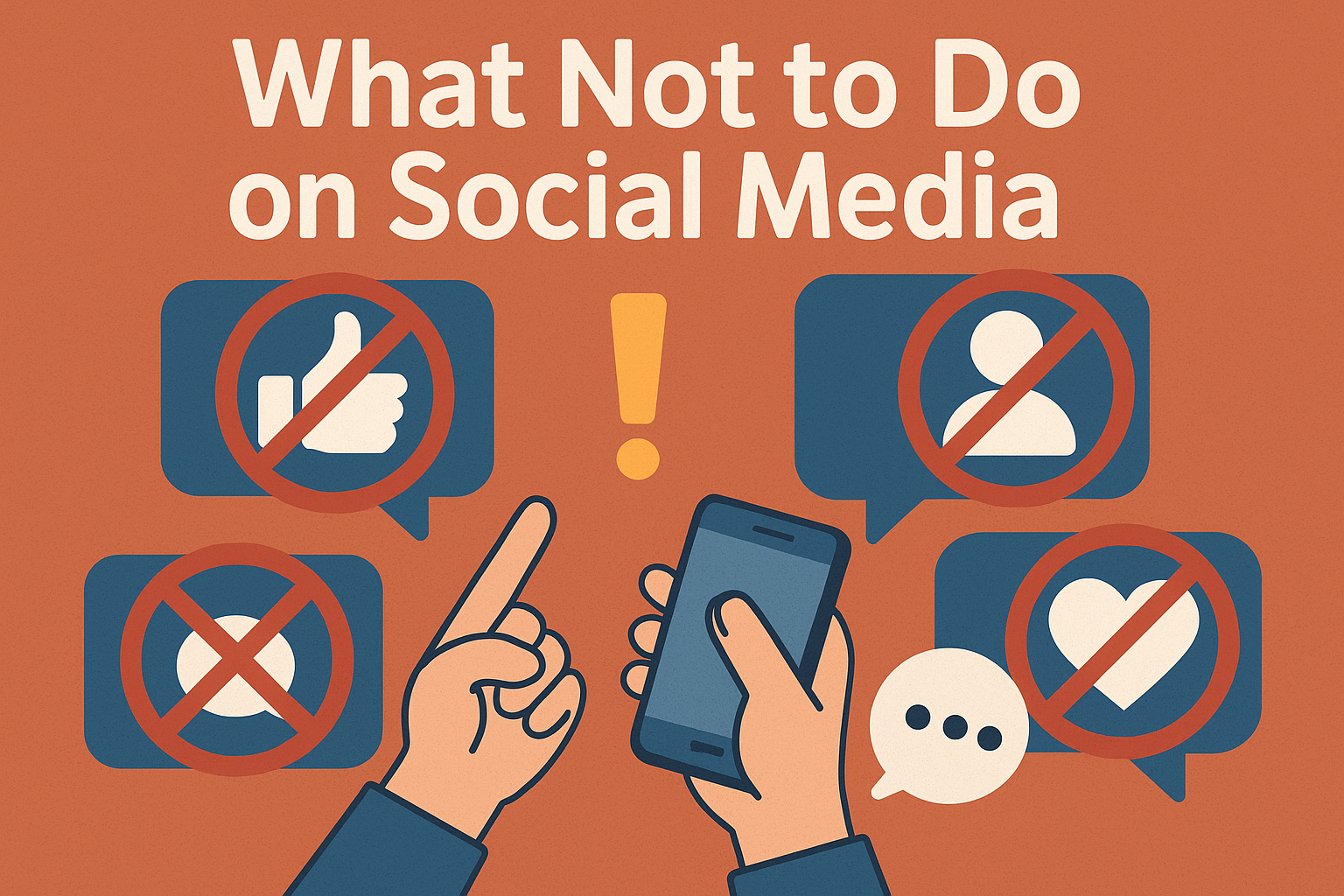Social media connects billions of people, but even small missteps can have lasting consequences. From sharing personal information to posting in the heat of the moment, what you publish online shapes your reputation and security. Recent studies show that oversharing details like birthdays, locations, or vacation plans increases risks of identity fraud by 43%.
Businesses aren’t immune either. Brands like Starbucks and Nike have faced backlash for tone-deaf campaigns or employee leaks. A single controversial post can damage trust built over years. For individuals, oversharing with friends might seem harmless—until sensitive details fall into the wrong hands.
This guide focuses on practical strategies to avoid common traps. You’ll learn how to protect your image, spot red flags in content creation, and maintain professionalism. We’ll cover privacy settings, content calendars, and real cases where impulsive posts led to job losses or legal issues.
Whether you’re managing a brand account or personal profile, proactive planning reduces mistakes. Let’s explore how to stay authentic while keeping your digital presence secure and respected.
Key Takeaways
- Oversharing personal details raises identity theft risks by 43%.
- Brands like Starbucks have lost customer trust through poorly planned posts.
- Privacy settings alone won’t prevent reputational damage from impulsive sharing.
- Content calendars help maintain consistency and reduce errors.
- Geotags and real-time location updates expose users to physical security threats.
- Deleted posts often remain accessible through screenshots or archives.
What Not to Do on Social Media: Critical Mistakes to Avoid
Your online activity might seem harmless, but a single misstep can spiral into real-world problems. Balancing authenticity with caution helps maintain both personal safety and professional credibility across platforms.
Guard Against Personal Data Exposure
Sharing identifiers like full names, birthdates, or home addresses gives hackers 43% more leverage for identity theft. A 2023 FTC report showed 42% of fraud cases began with overshared social media details.
Even “fun” posts create risks. Vacation photos with geotags alert burglars to empty homes. Work-related leaks about clients or projects can breach contracts.
We also referenced the unique UGC Club workflow in one of our key takeaways, which can guide replicable content planning.
| Shared Information | Potential Risk | Prevention Tip |
|---|---|---|
| Full home address | Physical security threats | Disable location tagging |
| Real-time travel updates | Burglary targeting | Post after returning |
| Work documents/screenshots | Corporate data breaches | Use company-approved channels |
Filter Questionable Material
Private chats or edgy jokes often resurface publicly. A beverage company faced lawsuits when an employee’s discriminatory meme went viral, costing them 18% of their loyal customers.
Before posting:
- Would this content offend someone unfamiliar with the context?
- Could it be misinterpreted in 5 years?
Tools like Hootsuite’s approval workflows help teams review drafts. Buffer’s analytics identify high-risk phrases before publishing.
Privacy and Security Blunders
Sharing too much online is like leaving your house keys in public. Hackers and scammers mine profiles for details that seem harmless—pet names, school mascots, or even favorite restaurants. These often double as security question answers. A 2023 FTC report found 42% of identity theft cases started with overshared information on media platforms.
Keep Personal and Sensitive Data Secure
Businesses face unique risks. An accounting firm accidentally exposed client tax IDs in a LinkedIn post’s background photo. The breach cost them 27% of their customers within months. Sensitive data requires layers of protection:
- Enable two-factor authentication for all work accounts
- Blur documents in photos using editing tools
- Train teams to recognize confidential material in visuals
Limit Location, Travel Plans, and Confidential Insights
Geotagged gym check-ins or vacation countdowns invite trouble. Burglars target homes when posts signal empty houses. One family’s Disneyland live stream led to a $15,000 theft. Even tagging friends at events reveals others’ routines.
“Digital footprints now impact physical safety. Assume every location update is public, even in private groups.”
Adjust privacy settings monthly and review tagged content. For businesses, avoid mentioning unreleased products or partnership timelines. A leaked screenshot once caused a tech company’s stock to drop 6% overnight. Balance engagement with caution—your audience values both transparency and discretion.
Engagement and Reputation Pitfalls
Navigating online interactions requires both strategy and empathy to build trust. Brands that master this balance see 68% higher retention rates than those prioritizing sales pitches, according to Sprout Social data.
Turn Critics Into Allies
When Toblerone redesigned its chocolate bars in 2016, customers flooded their platforms with complaints about smaller gaps between triangles. Instead of defending the change, the company acknowledged feedback publicly: “We hear you – your passion shows how much this treat matters.” They later reintroduced the original design in limited batches, turning frustration into nostalgia-driven sales.
-
Building your brand online? Check out how these proven social media tactics for realtors can amplify your reach and engagement.
Blend Personality With Purpose
A bakery owner gained 12K followers by mixing recipe videos with stories about ingredient sourcing. Followers felt connected to her mission without seeing private family moments. Separate accounts for business and personal life prevent oversharing while maintaining professionalism.
Ditch the Hard Sell
Posts that scream “BUY NOW!” repel 74% of users, per HubSpot research. One fitness brand boosted engagement by 40% after replacing product close-ups with tutorials showing how their gear improves workouts. Offer value first – discounts feel earned rather than desperate.
“Audiences crave authenticity, not ads. Share struggles like shipping delays alongside successes to build relatability.”
– Social Media Today, 2023
Interactive polls and Q&A sessions let customers shape your content calendar. Partner with micro-influencers who align with your values for organic promotion. Remember: Every comment is a chance to showcase your brand’s voice. Respond within 24 hours, even if just to say, “We’re looking into this – thanks for flagging!”
Conclusion
Mastering your digital presence requires vigilance and smart strategies. Avoid oversharing personal details, posting reactive content, or neglecting privacy settings—these mistakes can unravel reputation and trust in minutes. For businesses, balancing promotional material with value-driven posts keeps audiences engaged without feeling marketed to.
Tools like AI-powered schedulers help maintain consistency while filtering risky phrases. Pre-planning posts reduces errors, and real-time monitoring lets you address negative comments before they escalate. Remember: 74% of customers value brands that respond thoughtfully to feedback.
Start by auditing your profiles today. Update privacy settings, review tagged content, and test engagement tactics like polls or tutorials. Proactive measures—like those used by thriving businesses—build lasting loyalty and prevent costly blunders.
Your social media presence reflects your professionalism. Protect it by applying these tips, and watch both security and engagement grow organically.
-
If you’re struggling to keep up with content demand, this UGC shorts creation platform can help maintain consistency without compromising quality.
FAQ
Why is oversharing personal details risky on platforms like Instagram or Facebook?
Revealing too much (like home addresses or financial info) makes you vulnerable to identity theft, scams, or physical security risks. Keep private details offline to protect yourself and loved ones.
What counts as “inappropriate content” for business accounts on LinkedIn or TikTok?
Offensive jokes, divisive political rants, or unprofessional photos/videos can alienate followers. Stick to brand-aligned posts that respect your audience’s values and platform guidelines.
How can I secure sensitive data when posting updates on Twitter or WhatsApp?
Avoid sharing confidential info like passwords, credit card numbers, or unreleased business plans. Use privacy settings to limit who sees posts, and double-check tags/geotags before hitting “share.”
Should I delete negative comments on my brand’s Facebook page?
Not always. Respond calmly, address concerns publicly, and offer solutions. Deleting valid criticism can escalate frustration and harm your reputation. Save removals for spam or hate speech.
How do I balance personal stories with business marketing on TikTok or Instagram?
Share relatable behind-the-scenes clips or team achievements to humanize your brand, but keep the focus on value-driven content. A 70/30 split (educational/entertaining vs. promotional) often works well.
Why do overly sales-heavy posts hurt engagement on platforms like Pinterest?
Audiences crave authentic connections, not constant ads. Mix promotional content with tips, user-generated photos, or interactive polls to foster trust and two-way conversations.

